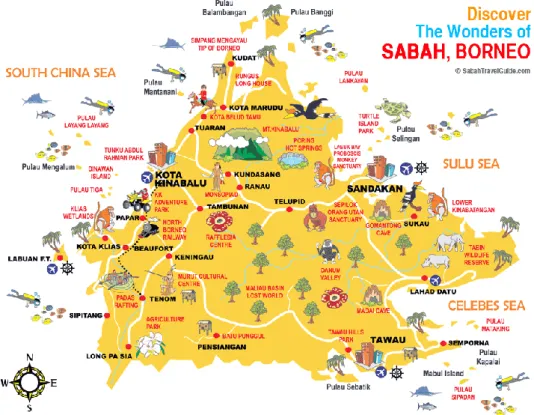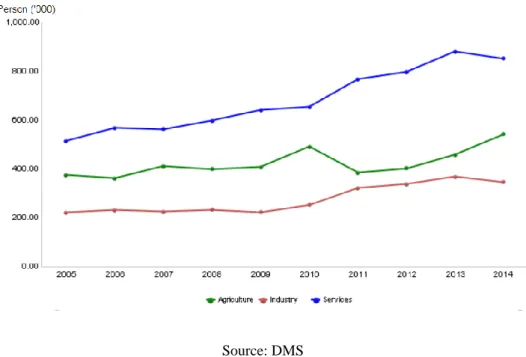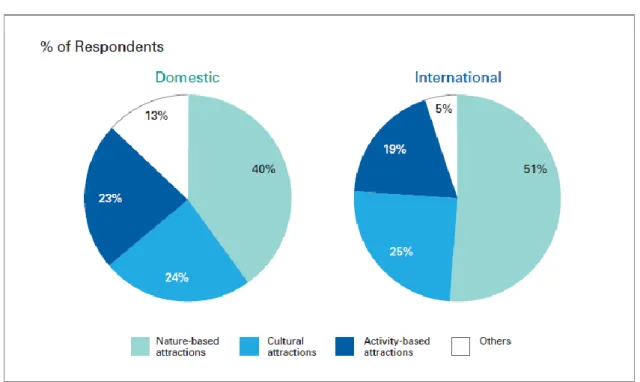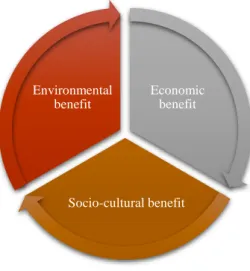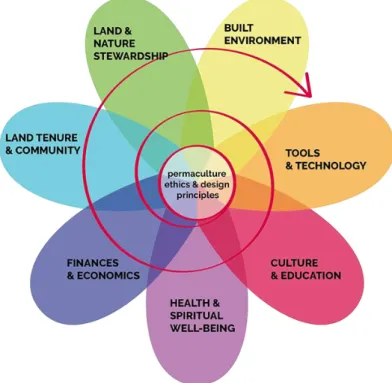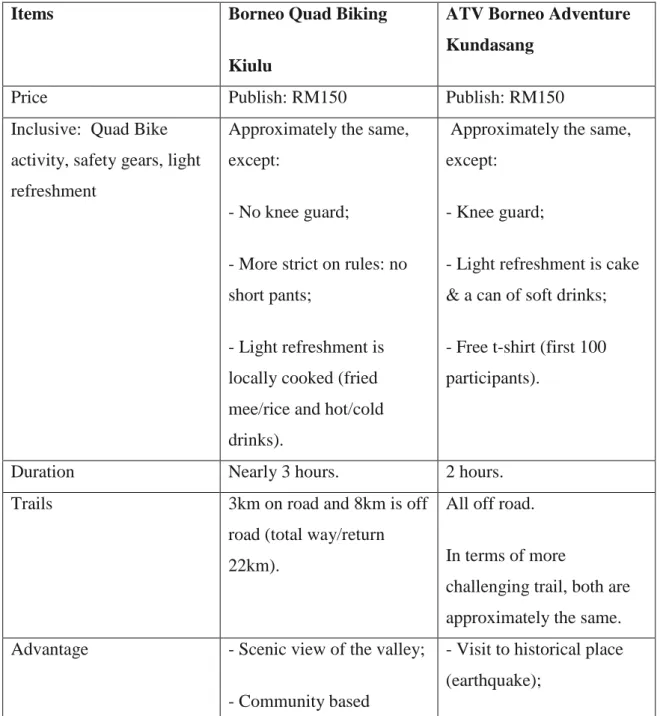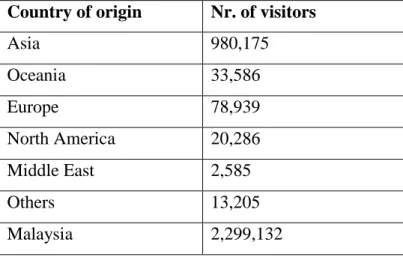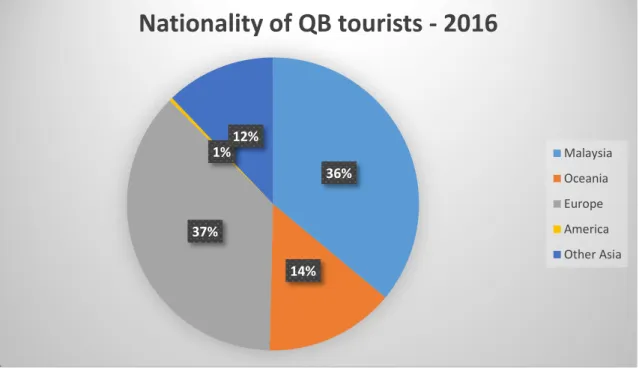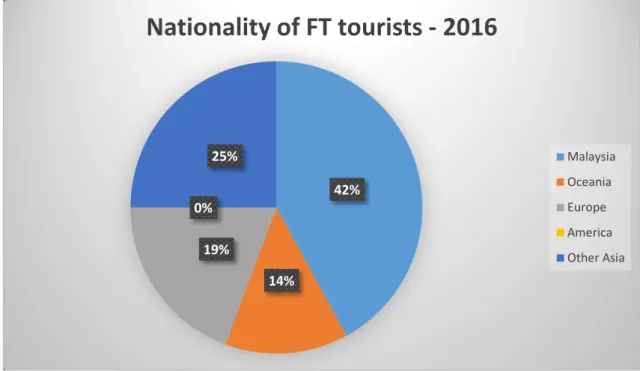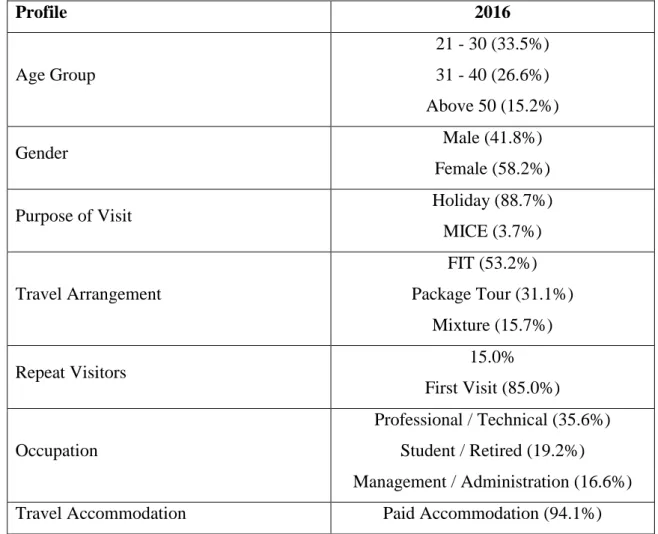Filipa Benvinda Ramos Gomes
COMMUNITY BASED ECOTOURISM AS A NATURE
CONSERVANCY TOOL - A PERMACULTURAL PERSPECTIVE
KIULU FARMSTAY STUDY CASE
ENVIRONMENTAL EDUCATION PROGRAM FOR KIULU COMMUNITIES
Jury:
President: Doctor Professor Sara Proença Arguendo: Doctor Professor Isabel Dinis
Advisor: Adjunct Professor Pedro Bingre do Amaral
Filipa Benvinda Ramos Gomes
COMMUNITY BASED ECOTOURISM AS A NATURE
CONSERVANCY TOOL - A PERMACULTURAL PERSPECTIVE
KIULU FARMSTAY STUDY CASE
ENVIRONMENTAL EDUCATION PROGRAM FOR KIULU COMMUNITIES
Jury:
President: Doctor Professor Sara Proença Arguendo: Doctor Professor Isabel Dinis
Advisor: Adjunct Professor Pedro Bingre do Amaral
Professional Internship Report presented to Escola Superior Agrária de Coimbra to fulfill the necessary requirements to obtain a degree of Master in Ecotourism
A ti Mãe Terra, pelo inexplicável. To you Mother Earth, for the inexplicable.
"Centuries were needed to know a part of the laws of nature. A day is enough for the wise man to know the duties of man." Voltaire
“Though the problems of the world are increasingly complex, the solutions remain embarrassingly simple.”
Acknowledgments
First of all, I would like to thank to Borneo Eco Tours and BEST Society for accepting me as an intern and for its total support on my proposal to Kiulu. Then, I must thank to all the hosts in Kiulu, who so well received me: Mr. Ben and Mrs. Nuria, Mr. Jumadi and Mrs. Ester, Mr. Feridin and Mrs. Diana, Mr. Saidin and Mrs. Jovita, Mr Martin and Mrs. Rosena, Mr. Paladius and Mrs. Felixcia, Mr. James and Mrs. Salahoi, and all their relatives. They showed me true hospitality and I couldn’t have been better treated. Their full transparency during interviewing time deserves my deepest acknowledgment. Special thanks to Cathy for being my interpreter, translating my speech to Malay whenever needed.
Also, I would like to thank to all Borneo Eco Tours staff for supplying me the requested data under this report topic, particularly to Nancy, Rosa and Kelwin.
Thank you Yuko for believing and put trust on me.
Thank you Mr. Teo for being the mentor and booster of such great projects. Thank you Leanne for all I couldn’t mention, because is too much. But most of all, thank you for being my friend.
To all my master’s teachers in Coimbra, many thanks for sharing your knowledge and for an interesting and challenging year. Professor Pedro, thank you for your patience and guidance.
Abstract
The world is facing a new transition. Environmental impacts are on the order of the day and its consequences are no longer a far distant prediction. The United Nations with the cooperation of governments, organizations, private companies and individuals are already making the effort to urge environmental protection and nature conservancy, intervening in different sectors. Tourism is not an exception and especially this year an important boost is being given with the announcement of the 2017-International Year of Sustainable Tourism Development from UNWTO. Representing 10% of the world’s GDP and 30% of services exports (UNWTO, 2016), tourism is one of the biggest world industries and creates a huge impact on environment, which can be very positive or extremely negative depending on the way it’s managed.
Gladly, the growing awareness and concern about Man’s environmental impacts on planet earth has created a global trend where concepts as sustainability, local economy, resilience, organic farming, permaculture, self-sufficiency, clean energy, renewable resources and 3 R’s (Reduce, Reuse, Recycle) have become popular and every day better and renewed solutions arise.
Connecting sustainable practices with a newly born Community-Based Ecotourism (CBET) project in Malaysian Borneo, a program was developed with the attempt to improve both, nature and human life, creating a crescent environmental awareness among local communities in Kiulu and proving that CBET can act as a nature conservancy tool when, through capacity building, a business opportunity is given to empower remote rural areas with decaying livelihoods.
Table of contents
Acknowledgments ... IV
Abstract ... V
List of tables ... VIII
List of figures ... VIII
List of acronyms ... X
Introduction ... 1
Theme justification ... 1
Project goals and key questions ... 2
Report structure ... 3
CHAPTER 1: Theoretical framework ... 3
1.1 Malaysian Borneo – Sabah State ... 3
1.1.1 Territory brief characterization ... 3
1.1.2 Population and socio-economic aspects ... 5
1.1.3 Tourism offer ... 5
1.1.4 Tourism evolution ... 9
1.2 Biodiversity, livelihoods and tourism linkage in Sabah ... 12
1.2.1 Biodiversity hotspot ... 12
1.2.2 Environmental issues ... 14
1.2.3 Ecotourism approach ... 16
1.3 Community Based Ecotourism theoretical outline ... 17
1.3.1 Concept definition ... 17
1.3.2 Capacity building and environmental education ... 19
1.3.3 CBET as a nature conservancy tool... 19
1.4 Permaculture overview ... 20
1.4.1 Ethics ... 21
1.4.2 Principles ... 21
1.4.3 Fields of intervention ... 22
1.4.4 Permaculture as a tourism product ... 24
CHAPTER 2: Kiulu Farmstay study case ... 25
2.1 Methodology ... 25
2.2.1 Supply ... 26
2.2.2 Demand ... 30
2.2.3 Annual growth ... 34
2.2.4 Estimation of market needs ... 36
2.3 Strategic framework ... 37
2.3.1 Mission and positioning statement... 37
2.3.2 SWOT analysis ... 37
2.3.3 Goals ... 39
2.4 Homestay experience ... 39
2.5 Community consultation: results analysis ... 44
2.6 Enironmental education program ... 48
2.6.1 Event n. º 1 ... 48 2.6.2 Event n. º 2 ... 57 2.6.3 Event n. º 3 ... 58 2.7 Aditional achievments ... 58 2.8 Proposals ... 60 Discussion ... 62 Conclusion... 64 Links ... 65 References ... 66 Appendix ... 73
VIII
List of tables
Table 1 – Quad Bike experience comparison (tourist testimony) Table 2 –Demographic profiles of international visitors (2016) Table 3 – Countries of origin of international visitors (2016) Table 4 - Kiulu Farmstay SWOT Analysis
Table 5 - List of tourist activities
Table 6
-
List of appropriate material for compostTable 7 - List of allowed and forbidden waste in a compost pile Table 8 – Homestay personal evaluation (1 to 5 stars)
Table 9 – Personal schedule: Homestay experience Table 10 – Homestay families’ questionnaire
Table 11 – Problems, causes and solutions in domestic compost Table 12 - Evaluation form
List of figures
Figure 1 – Map of Borneo
Figure 2 – Eco-Adventure Destinations in Sabah Figure 3 – Sabah’s travel map
IX Figure 5 - Sabah visitor arrivals 2002 – 2016
Figure 6 - Purpose of Sabah’s visitors Figure 7 - Biodiversity hotspots (2005)
Figure 8 – CBET pillars for sustainable development Figure 9 - Permaculture principles
Figure 10 – Permaculture flower
Figure 11 - BQB monthly tourists (Jan. - Dec. 2016) Figure 12 - FT monthly tourists (Jan. - Dec. 2016)
Figure 13 - Homestay monthly tourists (Jan. – Dec. 2016) Figure 14 - BQB tourists by nationality (Jan. - Dec. 2016) Figure 15 - FT tourists by nationality (Jan. - Dec. 2016)
Figure 16 - Homestay tourists by nationality (Jan. – Dec. 2016) Figure 17 – Host family welcoming
Figure 18 – Sinuripan waterfall (Tulung village) Figure 19 – Kg. Mantob paddy field
Figure 20 – Durian tree planting Figure 21 – Jungle food show cooking Figure 22 – Kadazandusun celebration
Figure 23 – Hill paddy with corn consociation Figure 24 – New water collector (Kg. Mantob)
X Figure 25 – Compost essential elements
Figure 26, 27, 28, 29 and 30 – Shapes of composting Figure 31 – Compost cycle
Figure 32 – Multicrop Banana Circle example and measures Figure 33 – Greywater natural system
Figure 34, 35, 36, 37, 38 and 39 – Contest participants
List of acronyms
BEST Society – Borneo Ecotourism Solutions & Technologies Society BET – Borneo Eco Tours
BIMP-EAGA – Brunei, Indonesia, Malaysia and Philippines – East Asian Growth Area BQB – Borneo Quad Biking
CBET – Community Based Eco Tourism DSM – Department of Statistics Malaysia FIT – Foreign Independent Tour
FT – Fig Tree
GDP – Gross Domestic Product KF – Kiulu Farmstay
MEA - Millennium Ecosystem Assessment
XI MUKEST - Mukim Ulu Ecotourism Solutions and Technologies
NGO – Non-Governmental Organization SRI – System of Rice Intensification
TIA - Travel Industry Association of America TIES – The International Ecotourism Society UNEP - United Nations Environment Programme
UNWTO – United Nations World Tourism Organization WWF – World Wildlife Fund
1
Introduction
A lot has changed on planet earth since human life arose. When Man altered his hunter-collector behavior to a sedentary living sustained by agricultural development, landscapes started to be modified and shaped according to human necessity. With an exponential population growth and an emergence of technology, industrial revolution happened, transforming natural resources in complex materials much harder to break down through the natural cycle of biodegradation. Now, with over 7.4 billion people in the world (Kaneda, 2016) and a high consumerism level of non-degradable disposable materials, the world is facing enormous negative impacts on life, where soil, water and air quality are compromised and, consequently, entire ecosystems are damaged and degraded, affecting humans, animals and plants.
Malaysian Borneo is located in Southeast Asia and, like many others places in the planet, has and is suffering great environmental impacts caused by human activity. This report lists its main issues and faces on practice a rural remote area of Kiulu, in Sabah state.
Kiulu has, in its majority, villages surviving over rubber extraction and rural farming. Both of this economies are decaying and the populations are increasingly earning less for their livelihoods. In other hand, tourism in Sabah is growing, becoming an alternative economy with great potential.
Theme justification
This internship was accomplished in cooperation with an ecotourism tour operator – Borneo Eco Tours – its NGO - BEST Society – and a local organization from 13 Kiulu communities - MUKEST. It focused in a newly born capacity building project in Kiulu, entitled Kiulu Farmstay and defined as Community-Based Ecotourism (CBET).
As an individual project, an environmental education program was developed considering the main issues identified with a prior need of intervention: waste management, greywater treatment and environmental awareness. Based on a background in permaculture, some of its methods were used to implement sustainable
2 and self-sufficient practices, using natural techniques with a very low budget: composting and banana circle.
It is believed that when the opportunity to enter an ecotourism entrepreneurship is given, local communities strengthen their predisposition to alter old environmentally unfriendly habits, in order to meet the demand. Thus, the idea of the environmental education program came in an attempt to improve nature preservation in Kiulu area and to show that CBET can change locals’ behavior towards nature conservancy and sustainable development.
Therefore, this study focused on assessment of community participation to bring sustainable local development in Kiulu and improve its natural environs.
Project goals and key questions
In a general perspective, it was first aimed to identify Sabah’s environmental issues, its cause and how is it affecting the territory, crossing it with the tourism industry. Secondly, the goal was to deepen this understanding on a local basis, where the project was desired to be developed: Kiulu. What were their day-to-day habits and how was this reflected on life and environment quality.
After this, the goal was to develop an environmental education program through a permacultural perspective, showing sustainable alternatives for local development: organic farming benefits, natural techniques for waste and water management, wildlife conservation and environmental quality preservation.
By this, it was intended to create environmental awareness in Kiulu’s community and improve Kiulu Farmstay offer through a stakeholders training (local and corporative), crossing the permaculture concept with CBET. Basically, understand how permaculture practice can influence the tourism market and protect nature at the same time.
Concluding, the main goal was to use a capacity building project sustained by tourism (Kiulu Farmstay) as a nature conservancy booster, proving that it can happen easily when a business opportunity is sighted through the ecotourism market.
3 Report structure
It’s first presented a literature review about the territory where the internship took place and an approach to all the concepts subject of this report’s theme, crossing it with recent tourism data in Sabah’s state.
Then, the study case is scrutinized according to a specific methodology, presenting the research upon the location and the involved stakeholders, followed by a tourism market analysis and a strategic framework definition for the project in its entirety.
Lastly, there’s a description of the achieved environmental education program, discussing its impacts on local stakeholders and the results that allowed to conclude about the report’s theme.
CHAPTER 1: Theoretical framework
1.1 Malaysian Borneo – Sabah State
1.1.1 Territory brief characterization
Borneo, located in the equatorial region of the Pacific Ocean, is the third largest island in the world with nearly 740 000 km2 and it’s occupied for three different countries – Brunei Darussalam, Indonesia and Malaysia. The Malaysian region of Borneo is divided into two states, Sarawak and Sabah (WWF, 2007). Being the second largest of the thirteen states in Malaysia, with a population of over 3 million people (Fabeil, 2013), Sabah straddles the northern tip of this island (figure 1) and has a heavily indented coastline of approximately 800-900 miles washed by the South China Sea to the west, the Sulu Sea to the north and the Celebes see to the east (Isley et al., 2013).
4
Source: Wikipedia – Borneo
By land, Sabah is bordered by Sarwak on its southwestern side, and Kalimantan (Indonesian Borneo) to the south. Sabah is generally mountainous, with the central mountain ranging from about 3000 feet to about 9000 feet in height, with lower ranges of hills near the coasts. These mountains and hills are dissected by an extensive network of river valleys with occasional plains. Over three quarters of the population inhabit the coastal plains. The climate of Sabah is of course tropical but on the whole equable. Temperatures rarely rise above 32 C (90F) except on extremely hot days, and along the coastal areas rarely drop below 20 C (68F) at night. However in the interior and at higher altitudes it can get quite cold at night (Teo, 2011).
The annual rainfall varies from about 150cm (60 inches) to over 450cm (180 inches) per year. In most parts of Sabah the wetter period occurs during the North-East monsoon from October to February and the drier season during the South-West monsoon from March to September but often there is no really sharp division between the two. It is enough to say that on the whole, sunny blue skies are the norm but when it
5 rains, the heavens open. Sabah lies just south of the typhoon belt (thus its name ‘Land below the wind’) and outside of the Pacific earthquake rim (Teo, 2011).
1.1.2 Population and socio-economic aspects
Possibly as long as 5000 years ago Sabah was settled by Mongoloid-type people. The largest indigenous group in Sabah is the Kadazandusun group. Within this group there exists at least ten distinct languages and possibly 30 or more dialects. They are traditional farmers occupying the fertile plains of the west coast and the interior (Teo, 2011). Their main occupation and income comes from rice, palm oil, rubber, fruit and vegetables crops.
About half of the population (50,5%) lives in rural areas, with almost equal proportion of males and females (Fabeil, 2013). A typical traditional family within this areas has, in average, 3 to 5 children and most of women are housewifes and farmers. Even so, as it will be demonstrated below, tourism has grown rapidly, represening a new livelihood for this population.
1.1.3 Tourism offer
Sabah, with its ancient rainforests, rugged, granite-peaked mountains, idyllic lagoons and pristine beaches, it encapsulates the very best of the ancient island (Isley et
al., 2013). It’s endowed with rich natural resources, culture and heritage, which are
already well known among discerning travelers. Sabah’s increasing international connectivity is also contributing to the growing number of foreign arrivals (Badawi, 2008).
The capital of Sabah, Kota Kinabalu, is conveniently situated at the heart of South East Asia. It is 1961 km from Hong Kong, 1143 km from Manila, 1495 km from Singapore, 1678 km from Kuala Lumpur and 2291 km from Taipei (Teo, 2011).
Sabah positions itself as a Premier Eco-Adventure Destination, where the combination of mountains, coral reefs, beaches, rainforest and wildlife (figure 2) is a strong differentiator in comparison to other more developed and well-known eco-tourism destinations in the region, such as Indonesia and Thailand (Badawi, 2008).
6 Figure 2 – Eco-Adventure Destinations in Sabah
Source: Sabah Tourism
a) Natural Resources
Sabah is rich in biodiversity, contributing significantly to Malaysia being one of
the 12 mega biodiversity hotspots in the world(CEMD, 2006). It’s home to many nature
and wildlife conservation areas and parks, including South East Asia’s highest peak Mount Kinabalu. It also boasts an abundance of tropical rainforest and wildlife such as the protected orangutan, as well as pristine beaches and diving sites. Its natural endowments provide the perfect destination for nature-inspired and adventure seeking travellers.
Major nature and adventure-based attractions include: - Nature and Wildlife:
• UNESCO World Heritage Site: Mount Kinabalu, Sipadan Island, Maliau Basin, and Tun Sakaran Park;
• Kinabalu Park / Poring Hot Springs; • Tunku Abdul Rahman Park;
7 • Sepilok Orang Utan Sanctuary and Rehabilitation Centre;
• Danum Valley Conservation Area; • Tabin Wildlife Reserve;
• Selingan Turtle Islands Park; • Gomantong Caves;
• Lower Kinabatangan Wildlife Sanctuary (Corridor of Life). - Adventure:
• Diving: Sipadan Island, Langkayan, Kapalai, Mantanani;
• Mountaineering and trekking: Mount Kinabalu, Crocker Range Park, Mount Trusmadi, Maliau Basin;
• Whitewater rafting: Padas River and Kiulu River; • Off-road 4x4 safari driving.
b) Culture and Heritage
Sabah with its myriad of ethnic cultures offers diverse experiences for the culture-seeking traveler. There are more than 32 different indigenous groups in Sabah with each tribe generally unique to a particular district, lending to a distinctive way of village living, music, dance and festivals, as well as unique handicrafts. Major cultural attractions include:
• Sabah Museum;
• Tingkayu Archeological Sites;
• Rungus Longhouse at Kampung Bavanggazo, Matunggong; • Water Village at Mengkabong, Tuaran;
8 • Pesta Kaamatan or Harvest Festival;
• Lepa-Lepa Regatta at Semporna; • Murut Cultural Centre at Tenom; • Handicrafts.
There is great demand for local handicrafts and souvenirs among tourists in Sabah. A survey conducted by the Sabah Tourism Board revealed that an average of 7%-10% of tourist expenditure is on handicraft (Badawi, 2008). Handicraft production is already an active tradition among many of Sabah’s natives – Kadazandusun, Murut,
Bajau, Rungus, Lundayeh and Melayu Brunei – and can be a good income source for
these communities.
Considering the wide range of natural, cultural and heritage resources (figure 3), the friendly people of Sabah provide a pool of services for the tourism and hospitality industry.
9
Source: Sabah Travel Guide
c) Geographic Location and Connectivity
Sabah is strategically located in the northeast corner of Borneo, with approximately 77.1 million and 139.4 million potential tourists within a 3-hour and 6-hour flight radius respectively. Sabah also has the potential to tap into the 34.5 million international visitor arrivals at the region’s major aviation hubs – Kuala Lumpur, Hong Kong, Singapore and Bangkok (UNWTO, 2015).
According to the World Tourism Organization, modern travelers want ‘activity-based’ attractions as opposed to ‘destination’ travel. Sabah is already a destination for nature, cultural and activity-based tourism, and has tremendous potential to grow by leveraging on its appeal as an ecological and adventure wonderland.
1.1.4 Tourism evolution
The services sector is a major contributor to Sabah’s GDP. Its share in 2015 represented 40.5%, of which 34.8% corresponded to tourism services. Comparing to the total GDP of 2015, the tourism sector represents 14.1% of its entirety (DSM, 2016). The services industry also provides the highest number of jobs (figure 4): 852,300 persons were employed in the services sector in 2014, which accounted for 49.0% of total
employment in Sabah(DSM, 2016). Tourism is envisaged to be the key driver for the
services sector in Sabah. It’s an important economic driver and the third highest contributor to Sabah’s economy after agriculture and manufacturing (Badawi, 2008).
10
Source: DMS
Looking at the chart below (figure 5), it can be seen that in a decade (2002-2012), the touristic growth was incredibly fast, especially for domestic tourism, which passed from five hundred thousand visitors a year to two millions.
Figure 5 - Sabah visitor arrivals 2002 – 2016
Data original source: MASB, Sabah / Immigration Dept, Sabah/Air Asia
Website data source: Sabah Tourism
0 500000 1000000 1500000 2000000 2500000 2002 2003 2004 2005 2006 2007 2008 2009 2010 2011 2012 2013 2014 2015 2016 National International
11 The last two years (2014 and 2015) a slight decadence happened, being verified a larger decrease of international arrivals (8.5% in 2014 and 1.8% in 2015). The domestic visitor arrivals had a minor decrease (2.6% in 2014 and 1.6% in 2015), not so relevant in comparison to the total number of national arrivals. Even so, the data from 2016 shows an inverse trend, with a considerable growth of international visitor arrivals (15.4%) and the same for domestic visitor arrivals, even though minor than the first one (4.6%).
In general, international tourists spend twice as much as domestic tourists. Main expenditure components are shopping, food and beverages, accommodation,
entertainment and recreation. Average length of stay of domestic and international
visitors is 3 nights and 8.2 nights respectively (Badawi, 2008).
Considering the tourism offer previously presented, is easily understandable why most of tourists choose Sabah for nature-based activities. Though, as it shown below (figure 6), cultural atractions and activity-based attractions also have a big share on tourists preferences.
Figure 6 - Purpose of Sabah’s visitors
12 The World Tourism Organization predicts that the trendiest destinations in the future will be the tops of the highest mountains, the depths of the deepest oceans and the ends of the earth. Therefore, conservation and conscientious tourism are important to ensure sustainability. With the increasing environmental sensitivities and greater awareness among discerning travellers, ecotourism has become the fastest growing segment in the tourism industry. It is estimated to be increasing 20% annually compared with 7% for tourism overall (TIES, 2006).
Concerns about the environmental, socio-cultural, and economic impacts of travel and tourism have increased in recent years. People express a preference for unique and culturally authentic travel experiences that protect and preserve the ecological and cultural environment and say they would pay more to use travel companies that strive to protect and preserve the environment (TIA, 2003).
1.2 Biodiversity, livelihoods and tourism linkage in Sabah
Biodiversity is essential to human development because of the goods and services it provides. An estimated 40% of the global economy is based on biological products and processes. However, on a global scale, biodiversity is being lost at a rate many times higher than that of natural extinction (Christ et al., 2003).
1.2.1 Biodiversity hotspot
Hotspots are regions that harbor a great diversity of endemic species and, at the same time, have been significantly impacted and altered by human activities. Plant diversity is the biological basis for hotspot designation—to qualify as a biodiversity hotspot, a region must support at least 1,500 endemic plant species (0.5 percent of the global total). Existing primary vegetation is the basis for assessing human impact in a region, and a hotspot must have lost 70 percent or more of its original habitat. (Meyers
et al., 2000).
To determine priority areas where biodiversity loss is a serious concern, Conservation International has identified a series of biodiversity “hotspots” (figure 7). These hotspots represent areas for urgent conservation action on a global scale. They are also useful for looking at the impact of tourism on biodiversity (Christ et al., 2003).
13 Figure 7 - Biodiversity hotspots (2005)
Source: Conservation International
From the figure above it is seen that the whole Borneo is considered a hotspot. As it was mentioned before, Borneo is the third largest island in the world, of which Sabah is part and has been frequently acknowledged as one of the most important centres of plant diversity in the world due to its location and consequent biome. Tropical rainforests and deciduous forests, coral reefs, large tropical lakes and the deep see hold most of the world’s biodiversity (MEA, 2005). Also, tropical forests occupy only 7% of the world’s land area, but contains more than 50% of the world’s species (Corlett and Primack, 2010).
This island, is conservatively, estimated to harbour 10,000-12,000 species of flowering plants, representing about 5-6% of the world total (Mat-Salleh and Beaman, 1992). Of these, 40-50% are endemic to the island, and up to 80% of the endemic species in Borneo occur in Sabah and Sarawak (Kiew, 1984).
Thus, Borneo is one of the world’s most important biodiversity centres and contains a wide variety of forest habitats, including mangroves, peat swamps and freshwater swamp forests, mixed dipterocarp forests, montane forests and forests on limestone and ultrabasic soils. Borneo has some of the highest levels of plant diversity
14 on Earth, with approximately 15,000 plant species, of which 6,000 are endemic (WWF, 2007).
In addition to orang utans, elephants and rhinos, Borneo also houses lesser-known species such as the sun bear, banteng (wild ox) and endemic Bornean gibbons. Surveys conducted throughout the area have established that there are well over 200 bird species, approximately 150 reptiles and amphibian species, and almost 100 mammal species. New species are constantly being found. Between 1994 and 2004, at least 361 new species have been identified in Borneo (WWF, 2007).
Though, being Borneo identified as a biodiversity hotspot, it means that at least 70% of its habitat is already lost and most of its endemic species are on the verge of extinction. For that reason, the negative human impacts that are causing this loss must be identified and reversed.
1.2.2 Environmental issues
Through the processes of selective logging and agricultural conversion, large areas of tropical forests are being degraded and fragmented worldwide (Blaser et al., 2011). South East Asia has the highest rate of lowland forest loss of any tropical region, with logging and deforestation for conversion to plantation agriculture being flagged as the most urgent threats (Sodhi et al., 2004). The standardized annual rate of deforestation for the whole of Borneo (2007-2012) was 4.68%. Industrial conversion of forests into oil palm and timber plantations is the major driver of deforestation.
Malaysia is an emerging economy characterized by unprecedented economic growth and booming large-scale palm oil agriculture and commercial exploitation causing deforestation and biodiversity loss (Nagle, 2009). Most of the historical lowland forest of Sabah was converted before 2007, mainly into plantations. In 2013 only a few areas of lowland forest remain, and many of these are fragmented. Forest fires are serious threats to the remaining upland forests and occurred up to 2012. Sabah is the only state or province of Borneo where considerable areas of montane forests have been converted. Slopes of the Kinabalu and Crocker range mountains were converted for agriculture mainly before 2007, but the process continued until 2010 (Wulffraat, 2014).
15 Sabah’s biodiversity policy is considered more ambitious than national policy; however, the state government has simultaneously pushed timber extraction, premature re-logging and forest conversion to maximize legal and illegal timber and palm oil revenues. Almost all licensed forest has been logged to near exhaustion and timber production declined by over 95% from the 1970s. Much selectively logged land has been clear-cut and converted to palm oil plantations, leaving vast areas damaged (Reynolds et al., 2011).
Government regulation is insufficient; implementation and monitoring largely lacking. Sabah’s forests are managed by the Sabah Forestry Department. Approximately 1,000,000 ha are concessioned out to Yayasan Sabah (Sabah Foundation) to finance poverty alleviation programmes and scholarships for Sabahans. (Brock, 2015). The forestry department reclassified protected areas as production forest, and allegedly even slopes as non-slopes, for additional logging (SarawakReport, 2012). Palm oil agriculture occupies 87% of all cultivated land – at least 80% of that area directly replaced natural forest (Toh and Grace, 2006). Rubber trees plantations also represent one of Sabah’s economies, being possible to see all over, extensive monocultural areas of this trees.
Detecting and mapping logging impacts on forest structure is a primary conservation concern, as these impacts feed through to changes in biodiversity and ecosystem functions (Pfeifer et al., 2015), provoking deforestation, habitat fragmentation, soil erosion and desertification, lack of water, oceans degradation, climate change, biodiversity loss and species extinction.
Also, corporations are criticized for water and air pollution (through fertiliser runoff and mills, resulting in decreasing fish stocks, flooding and degradation), infringement on indigenous rights (expansion into local land), and exploitation and abuse of its (foreign) workers (Norwana et al., 2011).
Furthermore, waste management represent a serious environmental threat. There’s a very poor system of garbage collection and recycling is almost inexistent, which leads to another serious issue: littering. Discharges to rivers, ocean and soil are a common practice, either in the cities or villages. On rural villages is a normal and
16 accepted practice to burn plastic, bury glass or just leave any kind of disposable material around the road sides, backyards or gardens.
Summarizing, logging, agriculture, pollution, forest fires, illegal poaching, waste management and the lack of environmental awareness are the main threats to Sabah’s biodiversity and environmental health. Seeing this as sad fact that makes of Borneo a biodiversity hotspot, for its loss, it’s urgent to reverse this situation and preserve one of the most unique and richest spots in the world. Tourism, as a growing industry, can be one of the pro-factors in this change, as it will be discussed further on.
1.2.3 Ecotourism approach
Tourism is a global industry with a bearing on the lives of millions of people, whether it is positive or negative. Mass tourism is a form of tourism that dominated the industry previously and its development showed a lack of consideration with regards to the limitations of natural resources, impact on wildlife, threat to the various cultural identities, and neglect of the environment, social development and participation of local communities in decision making for natural conservation (Risteski et al., 2012). Developing a tourism industry has both benefits and costs. However, if these impacts are understood from the views of tourism stakeholders, strengths and opportunities can be maximised while weaknesses and threats can be minimised. According to United Nations (2003), each destination will be different in terms of tourism characteristics. Thus each destination may have a particular list of indicators to evaluate the sustainability level in order to achieve the three principle outcomes of sustainable tourism development: economic growth, environmental integrity and social justice (Jaini et al., 2012).
With a growing interest to spend leisure time in nature and increasing awareness of environmentalism, ecotourism has become one of the fastest-growing segments of the tourism industry and its potential as a tool for development is enormous (UNEP, 2001). Compared with mass or ‘old’ tourism, ecotourism is touted as providing better sectoral linkages, reducing leakage of benefits out of the country, creating local employment, and fostering sustainable development (Belsky, 1999; Khan, 1997). Thus, it has been popularly promoted as a mean of reconciling wildlife conservation with economic development, particularly in developing countries (Campbell, 2002).
17 Ecotourism is characterised by its natural attractions, wildlife and wilderness habitats. Many countries favour ecotourism as a form of economic development as it is perceived as a low impact form of tourism. Ecotourism operations are generally small-scale, so are relatively easy to set up. Carefully planned and operated ecotourism sites, especially if it is village-based and includes local participation, is able to provide direct benefits that might offset pressure from other less sustainable activities that make use of natural and cultural resources (Bagul, 2009).
Turning this to an even more specific approach in order to show a true intention for local empowerment and capacity building, the concept of Community Based
Ecotourism is adopted.
1.3 Community Based Ecotourism theoretical outline
1.3.1 Concept definition
Community-based ecotourism is a form of alternative tourism activity which emphasizes the development of local communities and allows them to have substantial control over, to get involved in its development and management, and a major proportion of the benefits remain within the community (WWF, 2001).
What makes CBET distinct from CBT is that CBET persistently reiterates the preservation of the ecological surrounding with the ideology of ecotourism: educational-based, nature-based, and sustainable-based (Weaver, 2002), while the sociocultural perspective is still promoted.
Due to its nature, CBET brings the customer to the product itself. It ensures the involvement of local communities and provides considerable opportunities for contacts and linkages with the tourist. Besides, community-based ecotourism can pursue the local communities through different activities such as, cultural show, souvenir selling, guiding tourists, general merchants, and conservation of environment and their cultural assets (Aseres, 2015).
CBET seeks to create an equilibrium between conservation and local community livelihoods, conserving biodiversity simultaneously dropping rural poverty and accomplishing both goal on a realistic basis (Khanal and Babar, 2007). It encompasses
18 three major laws of sustainable development (figure 8) i.e. economic efficiency, social value and environmental sustainability (Mbaiwa, 2004).
Figure 8 – CBET pillars for sustainable development
Economic efficiency ensures people have access and enjoy high standards of living and that benefits are shared equally among all people involved in the activity. Social equity means all the participating user groups of CBET must have equal and just opportunities and access to resources as well as a fair share of revenues, right to participate in the decision-making process and administration related to tourism activity. All members of a community involved in CBET must benefit from the project. Ecological sustainability confirms natural resource preservation and respects the host community. CBET ensures the community's’ empowerment and ownership, conservation of natural and cultural resources, socioeconomic development and quality visitor experience (Hiwasaki, 2006). These factors will motivate the local community to participate in CBET. Sustainable tourism directs to the management of all resources in a way that economic, social and aesthetic needs can be fulfilled while upholding cultural integrity, essential ecological developments, natural diversity and life support scheme (Muhanna, 2006). Sole reasons for the development of community are to provide them with the essential wherewithal to improve their living conditions, to conserve their natural and cultural heritage and to offer monetary prospects (Bhatta, 2008).
Economic benefit
Socio-cultural benefit Environmental
19 1.3.2 Capacity building and environmental education
The basic reason for community development is to provide communities the necessary resources to enhance their livelihood, to protect their natural and cultural heritages and to provide economic opportunity as well. CBET can also promote social development and environmental health to the community through sustainable economic growth. Research conducted in the case of Puerto Princesa, Palawan Island found in Philippines showed that CBET can bring numerous socio-economic benefits to the Islanders in terms of generating foreign exchange, creating local employment, stimulating national and local economies, fostering international peace, and increasing environmental awareness and education (Andrade, 2008).
Wanga et al. (2013) found an association between residents’ environmental knowledge and their attitudes towards ecotourism. Participation of local communities in ecotourism can be motivated by having suitable management strategies that target improving local understanding of the environmental issues, stimulating favorable attitudes towards ecotourism and developing environmental plans (Zhang and Lei, 2012).
The lack of information about environmental problems has adverse impacts on local environmental behavior. Environmental knowledge is an important variable that affects the level of environmental engagement (Barr and Gilg, 2007). One of the greatest contentions towards getting the best type of natural activity is through knowledge. People with information, abilities and qualities will contribute to a stable and growing world (Adomssent, 2013; Lozano et al., 2013). Vicente-Molina et al. (2013) found that knowledge has a significant influence on pro-environmental behavior and attitudes towards the environment.
1.3.3 CBET as a nature conservancy tool
CBET focuses on environmental, social and cultural sustainability and plays a vital role in meeting the challenges of sustainability of world tourism (UNEP, 2011). In CBET, local community members are considered protectors of natural resources. It involves residents in conservation practices and often increases environmental awareness. (Hayombe et al., 2012; Zhang and Lei, 2012).
20 Accordingly to a study developed in Choke Mountain about the Potentialities of
Community Participation in Community-based Ecotourism Development, at Northern
Ethiopia, it is possible to create environmental awareness in the mind of local communities through CBET. If local communities are exposed to the benefits of CBET, they could become increasingly aware of the need for environmental protection for the sustainable management of natural resources. If CBET could be developed, the following environmental benefits would be generated. For example, it improves the water condition of the basin, has impacts on mitigating climatic change, minimizes the impact of agricultural based activities, biodiversity and ecosystem conservation, increases environmental awareness, has ecological and hydrological balance (Aseres, 2015).
This was the main attempt of this internship, placed in Kiulu. Input awareness, trigger critical thought and implement new sustainable practices, which, hopefully, will be followed. The techniques involved on the environmental education program come from a background in permaculture and will be described after the introduction to the concept and its possible fields of intervention.
1.4 Permaculture overview
The permaculture concept was coined in the mid-70’s by two Australian ecologists, Bill Mollison and David Holmgren to describe an integrated, evolving system of perennial or self-perpetuating plant and animal species useful to man (Mollison and Holmgren, 1978). Originally, the word emerged from permanent agriculture, based in a previous study about traditional farming practices in Asia, made by an American agronomist called Franklin H. King in 1911 (Paull, 2011). Mollison initially defined it as a conscious design and maintenance of agriculturally productive ecosystems which have the diversity, stability, and resilience of natural ecosystem. Later, the concept was extended to several fields of intervention, being considered as a permanent culture, where people, their buildings and the ways they organize themselves are central, evolving to a study of the design of those sustainable or enduring systems that support human society, both agricultural & intellectual, traditional & scientific, architectural, financial & legal (Mollison, 1988).
21 1.4.1 Ethics
It is important to refer that permaculture relies in three ethics: earth care, to preserve ecosystems; people care, to look after self, kin and community; and fair share, to set limits to consumption and redistribute surplus. These are distilled from research into community ethics, as adopted by older religious cultures and modern cooperative groups (Holmgren, 2002). This focus in permaculture on learning from indigenous, tribal and cultures of place is based on the evidence that these cultures have existed in relative balance with their environment, and survived for longer than any of our more recent experiments in civilisation (Holmegren, 1978:2000). Though, this doesn’t mean that we should ignore the great teachings of modern times, but in the transition to a sustainable future, we need to consider values and concepts outside the current social norm.
By this, permaculture is an eclectic and adaptive approach that emphasizes local and bioregional perspective and practice. At the same time, it is informed by a global view, maintains a strong tradition of technology and knowledge transfer across diverse areas and cultural traditions, and is fundamentally based on empirical observation and experimentation (Veteto and Lockyer, 2008).
1.4.2 Principles
The idea behind permaculture principles (figure 9) is that generalized principles can be derived from the study of both the natural world and pre-industrial sustainable societies, and that these will be universally applicable to fast-track the development of sustainable use of land and resources, whether that be in a context of ecological and material abundance or one of deprivation (Holmgren, 2002). The process of providing for people’s needs within ecological limits requires a cultural revolution. In this historical context, the idea of a simple set of guiding principles that have wide, even universal application is attractive.
22
Source: www.permanentculturenow.com
Permaculture principles are brief statements or slogans that can be remembered as a checklist when considering the inevitably complex options for design and evolution of ecological support systems. These principles are seen as universal, although the methods that express them will vary greatly according to place and situation. These principles are also applicable to personal, economic, social and political reorganization (Holmgren, 2002).
1.4.3 Fields of intervention
Permaculture models its designs for agroecosystems, buildings, and communities on patterns observed in nature, but perhaps more importantly, permaculture views humans and their creations and activities as part of the natural world. Rather than focusing on human creations, permaculture emphasizes the interconnections among these creations, humans, and the natural world. Permaculturists believe that this focus on interconnections is the best way to create systems that function in a sustainable manner (Veteto and Lockyer, 2008).
23 The Permaculture Design System Flower (figure 10) shows the key domains that require transformation to create a sustainable culture.
Figure 10 – Permaculture flower
Source: Holmegren, 2002
Each field of intervention has various applications (Umann, 2014):
● LAND & NATURE STEWARDSHIP: Bio-intensive gardening, forest gardening, seed saving, organic agriculture, biodynamics, natural farming, keyline water harvesting, agroforestry and nature-based forestry, integrated aquaculture, wild harvesting;
● BUILT ENVIRONMENT: Passive solar design, natural construction materials, water harvesting and waste reuse, biotechture, earth cheltered contruction, natural disaster resistant construction, owner building, pattern language;
● TOOLS & TECHNOLOGY: Reuse and creative recycling, hand tools, bicycles and electric bikes, eficiente and low pollution wood stoves, fuels from organic wastes, wood gasification;
24 ● CULTURE & EDUCATION: Home schooling, Waldorf education, participatory arts and music, sociel ecology, action research, transition culture;
● HEALTH & SPIRITUAL WELL-BEING: Home birth and breastfeeding, complementary and holistic medicine, yoga and other body/mind/spirit disciplines, spirit of place, indigenous culture revival, dying with dignity;
● FINANCES & ECONOMICS: Local and regional currencies, carpooling, ride sharing and car share, ethical investment and fair trade, farmers markets and community supported agriculture, WWOOFing and similar networks, tradable energy quotas, life cycle analysis and emergency accounting;
● LAND TENURE & COMMUNITY: Cooperatives and body corporates, eco-villages and cohousing, native title and traditional use rights, open space technology and consensus decision making.
1.4.4 Permaculture as a tourism product
Travel broadens the mind but comes with a carbon footprint. Therefore, practicing permaculture within the tourism sector can be well appreciated by tourists who see this as a way of minimizing their environmental impact and to assure a local-based consumption. Nowadays tourists are more aware, responsible and accurate about their choices. To offer an alternative experience with an environmental consciousness totally differentiates the tourism product, meeting the present demand, while showing a responsible care for environment and people. In addition, permaculture projects often allow hands-on activities which is increasingly sought after by today’s tourists.
More than a great tool to implement organic farming, permaculture, due to its popularity, has been showing itself as a great tourism product in many different shapes: eco-lodges, eco-villages, eco-retreats, voluntourism programs, WWOOFing, homestays, among many others who apply green policies, responsible environmental care, eco-friendly habits, self-sufficiency, fair trade and local empowerment. Saying this and crossing it with the previous literature about ecotourism and CBET, it can be assumed they have a common vision and share identical principles.
25
CHAPTER 2: Kiulu Farmstay study case
2.1 Methodology
The present study case addresses to Kiulu Farmstay project in its entirety, encompassing all stakeholders and focusing especially on MUKEST communities, as they are the direct agents in this tourism product and underpin the project's goal: local empowerment.
After an extensive literature review it’s first accomplished a quantitative and qualitative market analysis, approaching KF’s supply, demand and annual growth, based on Sabah Tourism published statistics and BET internal data.
Secondly, is presented the strategic framework of this study subject, defining it’s mission, positioning, SWOT analysis and goals, based on information given by BET staff.
Thirdly, to pull off the intended objectives, local communities were subject of the study. The homestay experience is described based on participant observation, listing the existing activities available for tourists and a personal analysis by sector.
Fourthly, a description of the inhabitants’ daily routine is made, grounded through observation in loco, non-structured interviews and a close-ended questionnaire. Seven families from two of the Lembah Embun communities (Kg. Mantob and Kg. Pinagon Baru) were interviewed and followed by close.
The interviews were leaded in an informal way, guiding the hosts into a spontaneous dialogue about their daily practices. The questionnaire was pre-determined, approaching the following topics: household numbers, families’ income, farming procedures, water and waste management and construction materials.
Fifthly, the environmental education program held is presented, crossing some permaculture fields of intervention and scrutinizing compost and greywater treatment procedures, identified as priorities. This program took place through an expository, oral and practical training, and the discussion of its results is made through a qualitative critical analysis.
26 Every word typed in Kiulu’s local dialect - Kadazandusun - was collected according to a verbal survey and is based on the popular knowledge of the indigenous people. It has not a scientific research.
2.2 Market analysis
2.2.1 Supply
a) Kiulu Farmstay
Kiulu Farmstay (KF) was inaugurated in August 2015 and encompasses: - Borneo Quad Biking (BQB);
- Homestay;
- Fig Tree accomodation (FT); - And several recreational activities.
BQB (link 1 – Links) can be sold as a separate activity, with an approximate duration of three hours, combining adrenaline with rural sightseeing. It’s the most popular activity, though not the most eco-friendly if it’s consider its carbon footprint.
The Homestay (link 2 – Links) experience can combine accommodation, meals and a
true relationship with local families. Also it includes traditional rural activities, giving a genuine experience of locals’ day-to day life. The FT (link 2 – Links) is an eco-building that provides accommodation in a higher standard. It also includes recreational activities and touch with locals. This recreational activities can happen in various forms, depending on the host family, which will be described further on.
For internal analysis, only the first three sub products are considered, once the recreational activities are inclusive in their packages and were never sold separately so far. Seeing it is a recent born project, the number of visitors from this year isn’t sufficiently expressive for conclusive market segmentation, but for some of the sub products this information can already show a clear growth evolution between the first and the second semester of the year, giving a good forecast for the future.
27 b) Direct competitors
A survey was made in order to realize who are the direct competitors of KF, considering the similar packages offered in the region.
For the BQB activity there is a tour operator (ATV Borneo Adventure) with a resembling offer (table 1), operating in Kundasang. The experience provided is alike, practicing an approximate price, equipment, food break and duration.
Table 1 – Quad Bike experience comparison (tourist testimony)
Items Borneo Quad Biking
Kiulu
ATV Borneo Adventure Kundasang
Price Publish: RM150 Publish: RM150
Inclusive: Quad Bike activity, safety gears, light refreshment
Approximately the same, except:
- No knee guard;
- More strict on rules: no short pants;
- Light refreshment is locally cooked (fried mee/rice and hot/cold drinks).
Approximately the same, except:
- Knee guard;
- Light refreshment is cake & a can of soft drinks;
- Free t-shirt (first 100 participants).
Duration Nearly 3 hours. 2 hours.
Trails 3km on road and 8km is off road (total way/return 22km).
All off road. In terms of more
challenging trail, both are approximately the same. Advantage - Scenic view of the valley;
- Community based
- Visit to historical place (earthquake);
28 tourism. - Visit to Desa Cattle;
- Scenic view of Mt Kinabalu.
Guide Very clear on the
SOP/Briefing.
Basic briefing.
Speed 30-40km. 30-40km.
Photo - No photo was taken. Only
sometimes;
- No network coverage at the area.
- There is a photographer following throughout the ride;
- Do have network coverage.
Elaborated by Rosalind, a BET staff member who experienced quad-biking with both companies in 2016 as a customer
Examining the tourist testimony on both experiences, it’s understandable that in some aspects BQB is providing a better service (safety briefing, longer duration and local food), but in other hand it’s realized that other improvements can be achieved to upgrade the service (constant photo shooting, merchandising and selection of points of interest with historical/cultural explanation).
One main reason for ATV Borneo Adventure to have a higher demand, besides the proximal location to Mount Kinabalu, is the number of quad bikes available (more than fifteen). BQB has ten units (including the guides) and in an internal analysis was noticed that this is a reason for withdrawal, seeing that in general, big groups search for this kind of activity.
In addition, it can be said that BQB website is well achieved and the direct online booking is a great advantage.
Comparing the Homestay supply, there are, at least, sixteen in KF surroundings with online information available, including Kiulu, Pukak, Mitabang and Tamparuli. Most of them offer similar activities, although it’s not so well explicit or organized online to be fully compared.
29 The Fig Tree accommodation doesn’t have a similar product nearby to be taken as a direct competitor. A few use the term ‘Farmstay’ but in different contexts and regions.
For future activities, a zipline was idealized, crossing the river and connecting Kg. Mantob to the Fig Tree. Analysing competitors, it’s verified that a near operator already offers two choices of zipline crossing Kiulu River (Zip Borneo).
c) Partnerships
BET has a large worldwide network of partners, covering agencies from the five continents. The largest number of partnerships is national, encompassing two hundred and thirty three agencies in Malayan territory. Other sixty nine are spread throughout Asia, with special expression in Singapore (19).
Secondly is the European continent, with two hundred and one representatives, mainly from United Kingdom (65), Germany (32), Sweden (18), Netherlands (17), Denmark (17) and France (13).
After is Oceania, with one hundred and two representative agencies. Here Australia has the biggest share (84).
In North America has sixty nine partners, which forty eight belong to USA and the remaining to Canada.
For last, Africa has six agents based in South Africa, one for Middle East and South America doesn’t have any representation at all.
In Kiulu, BET works as an intermediate for three distinct tour operators that offer complementary activities such as rafting and cycling: River Bug, Traverse Tours and Bike Borneo.
For KF supply there isn’t a specific business partner, since all activities are directly provided by BET.
30 2.2.2 Demand
a) Trend
There has been an up-market trend in tourism over the last few decades. With the rise in disposable income coupled with greater leisure time, better education and increasing sophistication, there is now a stronger demand for better quality products. As such, the market for mass tourism is fragmenting – tourists want more personalized, life enhancing travel in attractive natural environments with quieter resorts, family-oriented holidays or niche market destination hotels. This is witnessed from the declining
popularity of beach-based, mass tourism destinations such as Cancún.Sabah tourism is
presently experiencing a tremendous growth. With the completion of the new Kota Kinabalu International Airport (KKIA) in 2008 and the impending Asian open skies policy in 2009, there is a need to intensify the development of new tourism products to cater to the increasing number of tourists arrivals (Badawi, 2008).
b) Nationality
By nationality, according to Sabah Tourism, 2016 arrivals (table 3) are leaded by nationals (65.8%), followed by other Asian countries (29.6%) and a far distant third place to Europeans (2.5%). All other regions represent less than one percent each.
Table 3 – Countries of origin of visitors (2016)
Country of origin Nr. of visitors
Asia 980,175 Oceania 33,586 Europe 78,939 North America 20,286 Middle East 2,585 Others 13,205 Malaysia 2,299,132
31 On the contrary, in KF the main visitors after nationals are Europeans (mostly United Kingdom and France) and Australians, showing a slightly different market target (figure 13, 14 and 15).
For BQB, national and European visitors represent the majority of the demand (figure 13), where the last ones come mainly from France (47%), United Kingdom (38%), Germany (8%) and Denmark (6%).
Figure 13 - BQB tourists by nationality (Jan. - Dec. 2016)
Analyzing it, can be understood that nationals and Europeans are the keenest to this kind of activity, so maybe a stronger promotion can be required to the partner agencies within this areas.
From figure 15 it’s realized that national tourists represent almost half of the Fig Tree demand (42%). From Europe the most representative country is the United Kingdom (75%) and in Oceania is Australia (83%).
Figure 15 - FT tourists by nationality (Jan. - Dec. 2016) 36% 14% 37% 1% 12%
Nationality of QB tourists - 2016
Malaysia Oceania Europe America Other Asia32 As it was mentioned before, one large group was receive at once, from a Hong Kong college in an educational trip, so the following graphic (figure 16) cannot show a true demand representation, since the total number of visitors isn’t expressive enough.
Figure 16 - Homestay tourists by nationality (Jan. – Dec. 2016)
Reminding figure 4, from chapter 1, both national and international visitors in Sabah are increasing, giving an exciting forecast for tourism business in Sabah.
42% 14% 19% 0% 25%
Nationality of FT tourists - 2016
Malaysia Oceania Europe America Other Asia 26% 3% 7% 10% 54%Nationality of Homestay tourists - 2016
Malaysia Oceania Europe America Other Asia
33 c) Visitor profile
The table 2 show us the demographic profile of Sabah’s international visitors from 2016. Since more than half of the tourist arrivals are domestic (Malaysia), the following data is not completely representative of all Sabah’s tourism demand. Though, it can trace a good profile of international visitors, helping to define a strategy for specific segment targets of this fast growing market.
Table 2 –Demographic profiles of international visitors (2016)
Profile 2016 Age Group 21 - 30 (33.5%) 31 - 40 (26.6%) Above 50 (15.2%) Gender Male (41.8%) Female (58.2%)
Purpose of Visit Holiday (88.7%)
MICE (3.7%) Travel Arrangement FIT (53.2%) Package Tour (31.1%) Mixture (15.7%) Repeat Visitors 15.0% First Visit (85.0%) Occupation Professional / Technical (35.6%) Student / Retired (19.2%) Management / Administration (16.6%)
Travel Accommodation Paid Accommodation (94.1%)
Compiled by Research Division for Sabah Tourism Board / Jan-Dec 2016 (Four Quarter YE Dec 2016) Note:
1) Only Direct Arrivals by Air into Kota Kinabalu International Airport (KKIA) were taken into account. 2) The above data is based on International Visitor Profile Survey 2016.
3) Sample Size: 5,704
34 Analyzing the previous information, can be concluded that the majority of Sabah’s international visitors are aged between twenty one and forty years old (60.1%), with no significant gender differences and are visiting the state for the first time (85.0%). This leave us no doubt for the age segment target (21-40 years), telling us that this tourists are most likely in a good physical shape and possibly predisposed for nature & adventure activities. As most of them are visitors for the first time, probably Kiulu is not their first preference or the reason of travel to this destination. Though, reviewing chapter 1.1.4, the average length of stay of an international visitor is 8.2 nights, which indicate he has more time to spend in additional activities.
2.2.3 Annual growth
Below, three graphics are shown (figure 11, 12 and 13), only with the number of visitors who actually requested and paid for the service (invited guests not included). Like this is possible to have a true perspective on KF demand, as its separate annual growth analysis by sub product.
Figure 11 - BQB monthly tourists (Jan. - Dec. 2016)
Figure 12 - FT monthly tourists (Jan. - Dec. 2016)
0 5 10 15 20 25 30 35 40 45 50
BQB monthly tourists - 2016
35 Analysing BQB and FT 2016 monthly tourists, it’s visible the substantial growth on the second semester of the year. This indicates that the marketing strategy (4 P’s) is being satisfactorily effective for a first push.
Figure 13 - Homestay monthly tourists (Jan. – Dec. 2016)
From Homestay, no conclusion can be taken, once the business is not fully running and the majority of Homestays are still waiting for the government license to start to operate. The high number obtained in May comes only from a student group received at once in a combined tour package.
0 5 10 15 20 25 30 35
FT monthly tourists - 2016
N. of pax per month in Fig Tree
0 5 10 15 20 25 30 35
Homestay monthly tourists - 2016
36 2.2.4 Estimation of market needs
Accordingly to Sabah Development Corridor report (Badawi, 2008), although Sabah’s tourism industry has witnessed tremendous growth over the last decade, key supporting services need to be upgraded, particularly the availability of infrastructure, skilled human resources and public security.
a) Support for tourism industry operators
Tourism in Sabah is largely driven by the private sector. It is crucial that the following supporting services are enhanced to attract and facilitate private sector investment:
1. Infrastructure support, particularly utility services such as water supply, electricity and waste disposal; currently, supply of basic utility services is limited:
● Sewerage systems are already having difficulty coping with current demand; ● Due to lack of regular water and electricity supply, some tourism operators have to truck water supplies in and install their own electricity generating equipment which impact operating costs;
● Potential new tourist sites have limited access to water and electricity. 2. Sufficient skilled manpower:
● Shortage of skilled manpower is prevalent throughout the tourism sector, particularly at middle and upper management, as well as a lack of skilled tour guide, naturalists and language skills.
3. Ability to acquire good quality land on a leasehold or freehold basis at levels which do not compromise a project’s commercial viability.
4. Government delivery system; lengthy planning approval processes often lead to bureaucracy and unnecessary delays.
37 Apart from Kota Kinabalu and the major towns in Sabah, most inland tourist destinations are not accessible via sealed roads.
Tourism infrastructure and facilities also require upgrading. Currently there is a poor public transportation, absence of lay-bys and rest-stops along roads, and inefficient information distribution such as road signages and tourist maps. Poor maintenance, hygiene and cleanliness are also major complaints among tourists to Sabah.
2.3 Strategic framework
2.3.1 Mission and positioning statement
The mission of Kiulu Farmstay is to alleviate poverty among the local communities through capacity building and social entrepreneurship, rowing towards sustainable development.
KF positions itself as Community Based Ecotourism, integrating farmstead, homestays and outdoor adventure activities.
2.3.2 SWOT analysis
